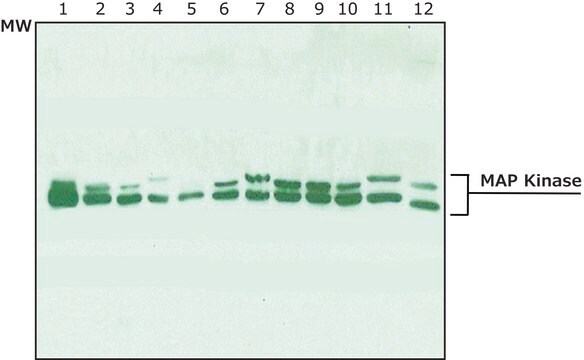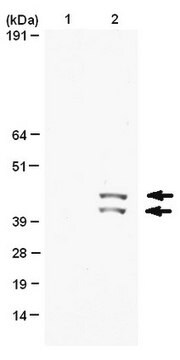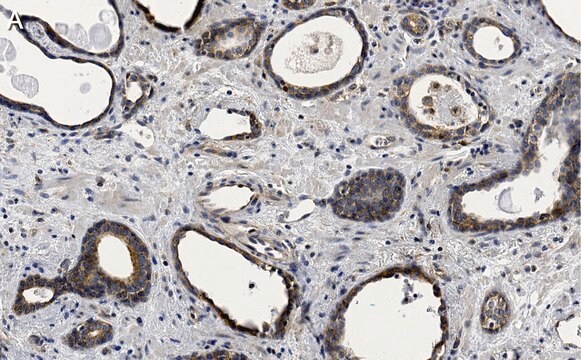AB5454
Anti-TUC-4 Protein Antibody
serum, Chemicon®
Synonim(y):
ULIP-1 Protein, CRMP-4, DRP-3, Dihydropyrimidinase-like 3
About This Item
Polecane produkty
pochodzenie biologiczne
rabbit
Poziom jakości
forma przeciwciała
serum
rodzaj przeciwciała
primary antibodies
klon
polyclonal
reaktywność gatunkowa
feline, monkey, human, mouse, rat
producent / nazwa handlowa
Chemicon®
metody
immunocytochemistry: suitable
immunohistochemistry: suitable
immunoprecipitation (IP): suitable
western blot: suitable
numer dostępu NCBI
numer dostępu UniProt
Warunki transportu
dry ice
docelowa modyfikacja potranslacyjna
unmodified
informacje o genach
human ... DPYSL3(1809)
Powiązane kategorie
Opis ogólny
Specyficzność
Immunogen
Zastosowanie
Immunocytochemistry: 1:1,000-1:5,000 (DAB detection).
Western blot: 1:2,500-1:25,000 using alkaline phosphatase.
Immunoprecipitation
Optimal working dilutions must be determined by end user.
Opis wartości docelowych
Postać fizyczna
Komentarz do analizy
POSITIVE CONTROL: Fetal brain/spinal cord tissue. Human neuroblastoma cell line SMS-KCNR or rat PC12 cells.
Inne uwagi
Informacje prawne
Nie możesz znaleźć właściwego produktu?
Wypróbuj nasz Narzędzie selektora produktów.
Kod klasy składowania
12 - Non Combustible Liquids
Klasa zagrożenia wodnego (WGK)
WGK 1
Temperatura zapłonu (°F)
Not applicable
Temperatura zapłonu (°C)
Not applicable
Certyfikaty analizy (CoA)
Poszukaj Certyfikaty analizy (CoA), wpisując numer partii/serii produktów. Numery serii i partii można znaleźć na etykiecie produktu po słowach „seria” lub „partia”.
Masz już ten produkt?
Dokumenty związane z niedawno zakupionymi produktami zostały zamieszczone w Bibliotece dokumentów.
Nasz zespół naukowców ma doświadczenie we wszystkich obszarach badań, w tym w naukach przyrodniczych, materiałoznawstwie, syntezie chemicznej, chromatografii, analityce i wielu innych dziedzinach.
Skontaktuj się z zespołem ds. pomocy technicznej







